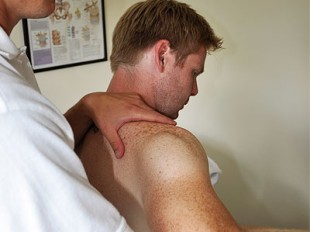Being the most movable joint in the body also makes the shoulder relatively unstable. The shoulder needs to be firmly anchored by it’s muscles, ligaments and tendons and any injury or overuse can cause instability and pain. Injury can lead to underuse of the shouder and in turn can lead to conditions such as ‘frozen shoulder’. Degeneration also causes pain and discomfort as do many diseases (such as gallbladder, liver or heart disease) any of which may cause pain to radiate to the shoulder.
Some occupations seem to be more prone to shoulder problems including any involving repetitive movements such as:
- Cashiers
- workers using keyboards for long periods
- plasterers
- hairdressers
- people exposed to vibration from machinery.
- Throwing Sports
- Cyclists
- Golfers

